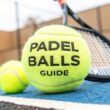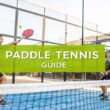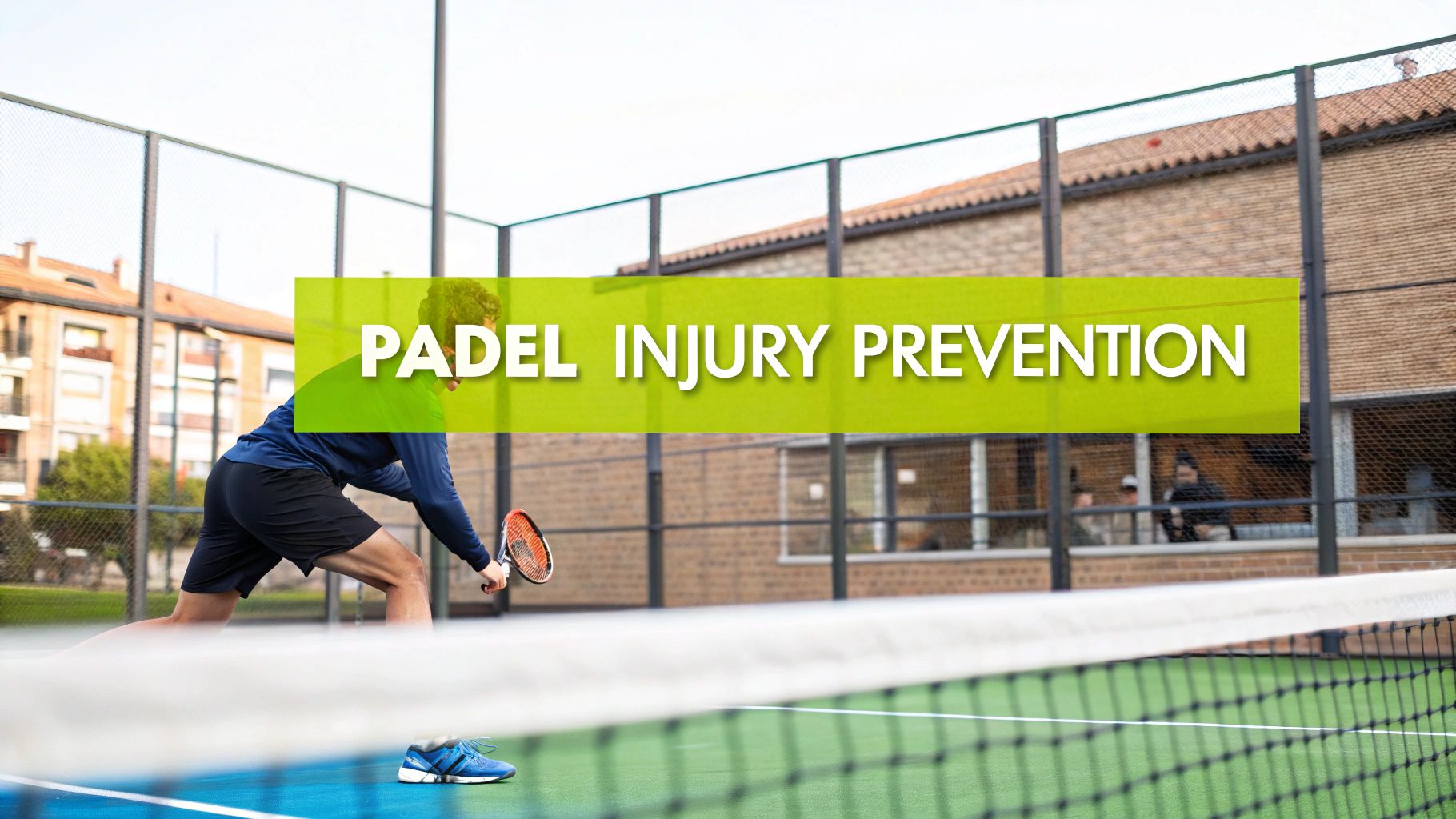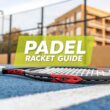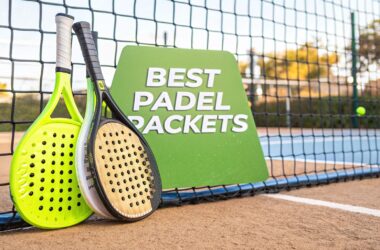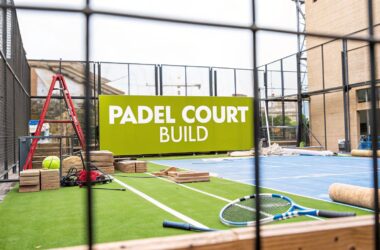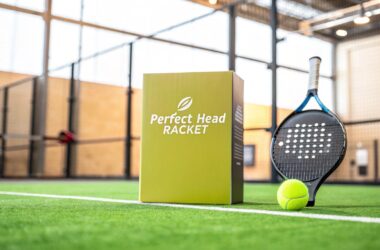Padel is a sport of explosive movements-sudden sprints, quick pivots, and powerful smashes. While thrilling, these actions place immense stress on your joints and muscles, making injuries like 'padel elbow,' ankle sprains, and shoulder strains all too common. The secret to a long and successful Padel career isn't just about perfecting your 'bandeja'; it's about building a resilient body that can withstand the demands of the game. A proactive approach is crucial, as is understanding the signals your body sends. For a professional's perspective on leveraging technology and data to understand how to avoid injuries and burnout in sports, this discussion on strategies to avoid injuries and burnout provides valuable insights.
This guide moves beyond generic advice, offering a curated roundup of 10 specific injury prevention exercises designed to fortify your body for the unique demands of the court. We will break down each movement with actionable steps, detail its unique benefits for padel players, and highlight common mistakes to avoid. This ensures you spend more time on the court and less time on the sidelines. By integrating these targeted exercises into your routine, you can transform your body from injury-prone to match-ready and stay ahead of the game.
1. Dynamic Stretching: The Padel-Specific Warm-Up
Forget the old-school advice of holding a static stretch before a match. For a high-intensity sport like padel, your pre-game routine needs to be active. Dynamic stretching involves controlled, continuous movements that take your joints through their full range of motion. This active approach is a cornerstone of modern injury prevention exercises, as it warms up muscles, lubricates joints, and increases blood flow, preparing your body for the explosive actions required on the court.
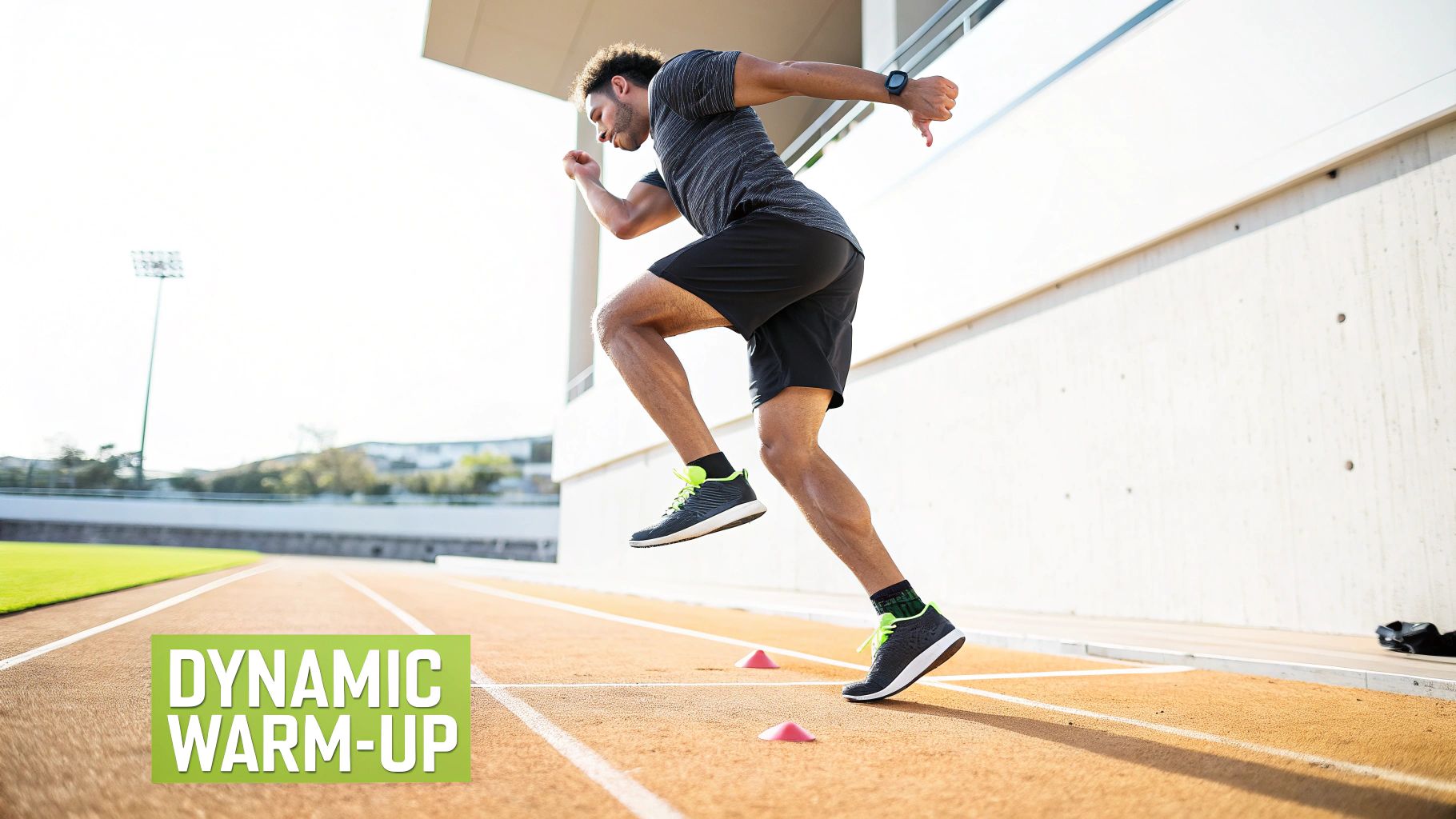
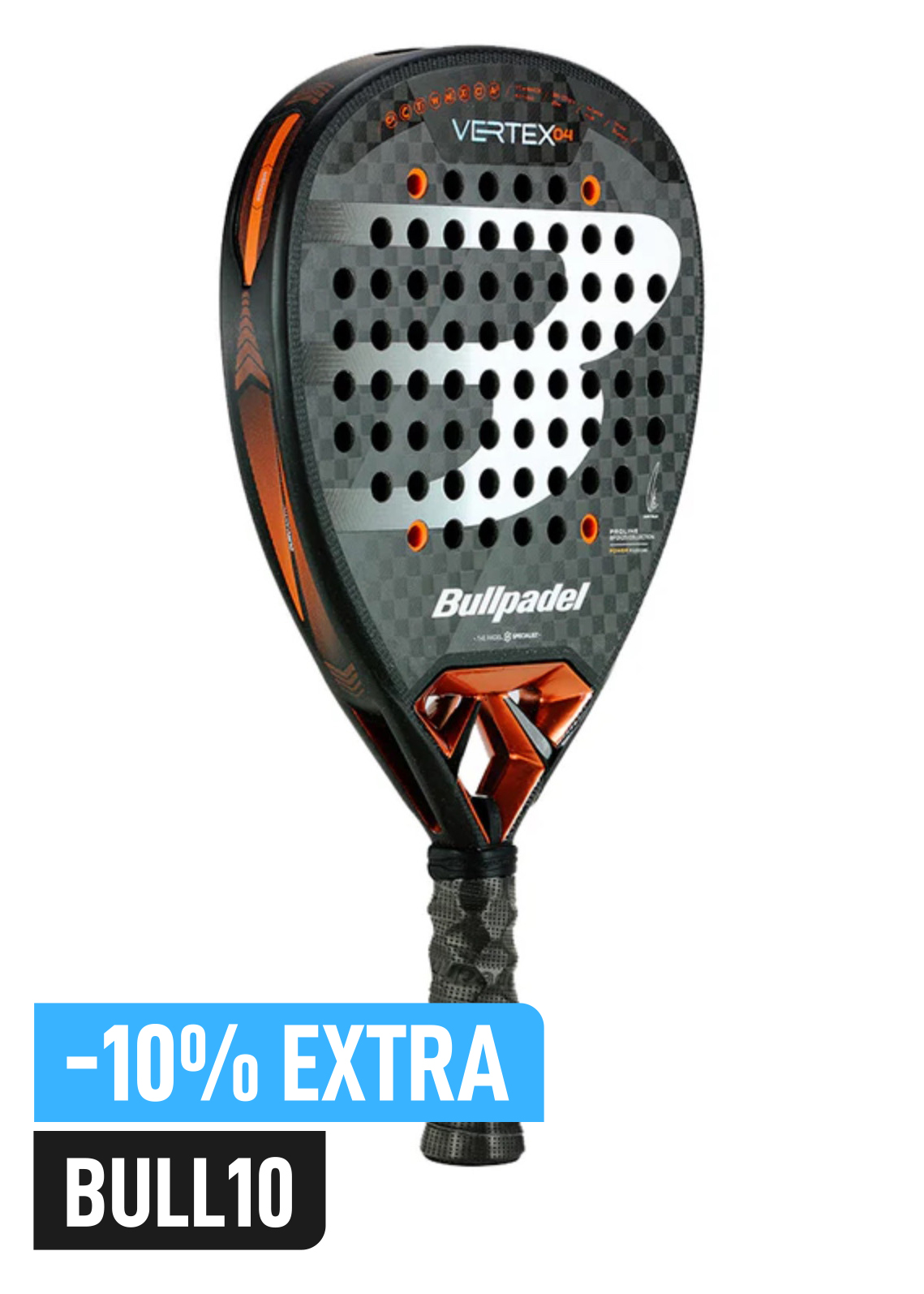
Buy the best padel gear to level up your next game!
CHECK OUT this deal from Padel Market!Get ready to take your game to the next level with the latest padel gear from Padel Market! Fast EU and Worldwide Shipping
Unlike static stretching which focuses on elongating muscles at rest, dynamic movements prime the neuromuscular system. They essentially tell your brain and muscles to get ready for action, improving coordination and power output. This direct preparation for sport-specific movements is what makes it so effective at reducing the risk of strains and tears.
Key Padel-Specific Dynamic Stretches
To maximize your warm-up, focus on movements that mimic the actions you'll perform during a game.
- Lunge Walks with a Torso Twist: This is perfect for preparing your hips, core, and thoracic spine for the rotational power needed in a bandeja or smash.
- Leg Swings (Forward/Backward & Side-to-Side): These open up the hip flexors, hamstrings, and adductors, crucial for quick lateral shuffles and lunging for low balls.
- Inchworms: This full-body movement activates the core, shoulders, and hamstrings, improving stability and mobility simultaneously.
How to Implement Your Dynamic Warm-Up
Consistency is key. Dedicate 5 to 10 minutes before every single practice or match to your dynamic routine.
- Start slow and controlled, gradually increasing the speed and range of motion as your muscles warm up.
- Focus on quality over quantity. Smooth, deliberate movements are more effective than rushing through the exercises.
- Avoid bouncing or jerking motions. The goal is controlled movement, not forcing a stretch.
By integrating a padel-specific dynamic warm-up, you’re not just preparing your body for performance; you are actively investing in your longevity in the sport by making it a fundamental part of your injury prevention exercises.
2. Core Stabilization Exercises
A powerful smash or a quick change of direction doesn't just come from your arms and legs; it originates from your core. Core stabilization goes beyond six-pack abs, focusing on the deep internal muscles that support your spine and pelvis. These exercises are a critical component of injury prevention exercises because a strong, stable core acts as a central link in your body’s kinetic chain, transferring force efficiently and protecting your lower back and joints from excessive strain.
When your core is weak, other muscles and joints must compensate, leading to poor mechanics and a higher risk of injury, particularly in the lower back, hips, and shoulders. By training these deep stabilizing muscles, you create a solid foundation for all movements on the padel court. This improves balance, posture, and power, ultimately reducing the likelihood of common overuse injuries.
Key Padel-Specific Core Stabilization Exercises
To build a resilient core, focus on exercises that challenge stability and resist unwanted movement.
- Plank and Side Planks: These isometric holds build endurance in the entire core musculature, essential for maintaining posture during long rallies.
- Bird Dog: This exercise enhances coordination and stability by challenging you to maintain a neutral spine while moving opposite limbs, mimicking the rotational control needed for shots.
- Pallof Press: Perfect for developing anti-rotation strength, this movement directly trains your core to resist the twisting forces experienced during powerful smashes and volleys.
How to Implement Core Stabilization
Incorporate these exercises into your routine 3-4 times per week, either as part of a warm-up or a dedicated strength session.
- Focus on quality over quantity. Holding a perfect 30-second plank is far more beneficial than a sloppy 60-second one.
- Maintain a neutral spine. Avoid arching your back or letting your hips sag during any exercise.
- Breathe steadily. Do not hold your breath; controlled breathing helps engage the deep core muscles effectively.
By prioritizing core stability, you are building an internal support system that makes your movements more powerful and safer, solidifying its place as one of the most effective injury prevention exercises for any padel player.
3. Proprioceptive Training (Balance Exercises)
Padel is a game of constant, rapid adjustments. Proprioceptive training hones your body's "sixth sense" by enhancing its awareness of position and movement. This type of training challenges your balance and coordination, often on unstable surfaces, which trains your nervous system to react faster to sudden shifts in direction or footing. This is a critical component of injury prevention exercises, as it strengthens the stabilizing muscles around joints, particularly the ankles and knees, drastically reducing the risk of sprains and falls.
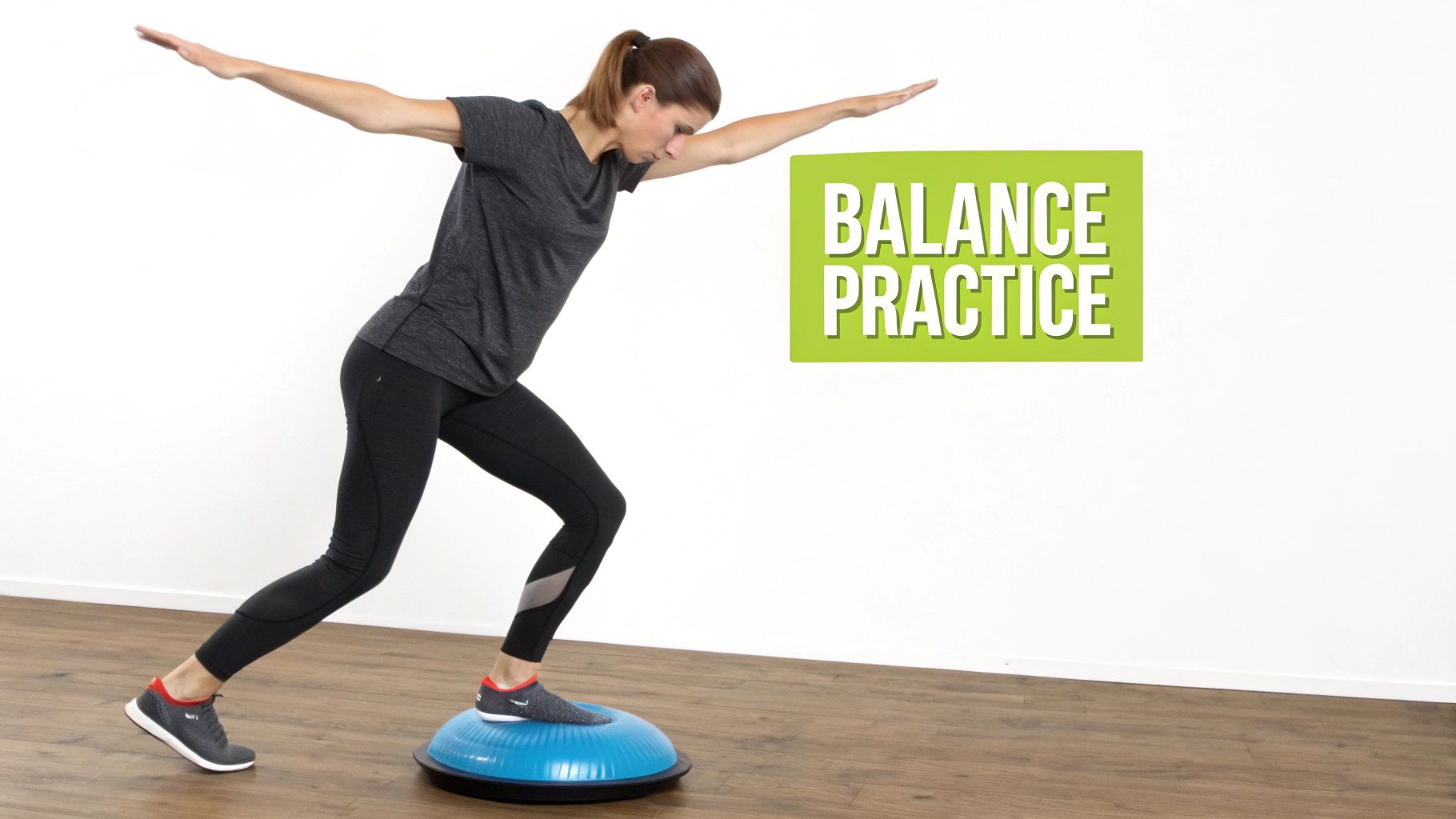
By improving the communication between your brain and your muscles, proprioceptive exercises give you greater control over your body's movements. This heightened awareness allows you to make subconscious micro-adjustments during play, helping you maintain stability when lunging for a drop shot or landing after a powerful smash. This proactive stabilization is key to preventing common padel injuries like ACL tears and ankle rolls.
Key Padel-Specific Proprioceptive Drills
Focus on exercises that challenge your balance in ways that mirror on-court situations.
- Single-Leg Stance: The foundation of all balance work. Progress by closing your eyes or standing on a softer surface like a cushion.
- Wobble Board or BOSU Ball Activities: Standing and performing gentle squats or ball tosses on these tools significantly challenges your core and lower-body stabilizers.
- Single-Leg Squats: This advanced exercise builds strength and stability simultaneously, mimicking the unilateral loading experienced when changing direction on the court.
How to Implement Proprioceptive Training
Integrate these exercises into your routine 2-3 times per week, either as part of your warm-up or on a separate training day.
- Start with a stable support, like a wall or chair, especially when trying new or more difficult exercises.
- Progress gradually. Master holding a position on a stable surface before moving to an unstable one.
- Focus on control. The goal is to minimize wobbling by engaging your core and ankle muscles, not just to survive the exercise.
By dedicating time to proprioceptive work, you are training your body's reflexes to protect itself, making it one of the most effective injury prevention exercises for the dynamic padel player.
4. Foam Rolling and Self-Myofascial Release
Think of foam rolling as a form of self-massage that targets muscle tightness and trigger points. This practice, known as self-myofascial release, involves using a foam cylinder to apply pressure to specific muscle groups. For padel players, it's an essential tool in your injury prevention exercises arsenal, as it helps release muscle knots, improve flexibility, and enhance circulation, leading to better recovery and reduced soreness.

Buy the best padel gear to level up your next game!
CHECK OUT this deal from Padel Market!Get ready to take your game to the next level with the latest padel gear from Padel Market! Fast EU and Worldwide Shipping
By breaking up adhesions in your muscles and fascia (the connective tissue surrounding them), foam rolling restores healthy tissue function. This improved tissue mobility allows your muscles to contract and lengthen more effectively, which is critical for preventing the strains and imbalances that often occur from the repetitive, high-impact movements in padel.
Key Foam Rolling Targets for Padel Players
Focus your efforts on the muscles that take the biggest beating on the court.
- Quadriceps & IT Band: Rolling these areas helps alleviate tension from constant lunging and squatting.
- Calves & Hamstrings: Crucial for releasing tightness that can contribute to Achilles or knee issues.
- Glutes & Piriformis: Targeting these muscles can relieve hip tightness and lower back discomfort.
- Lats & Upper Back: Essential for maintaining shoulder mobility for powerful smashes and bandejas.
How to Implement Foam Rolling
Incorporate this practice into your pre-game warm-up or post-match cool-down for maximum benefit.
- Slow and Steady: Roll very slowly over the muscle, spending about 30-60 seconds on each group.
- Pause on Tender Spots: When you find a trigger point, pause and apply gentle pressure for 20-30 seconds until you feel the tension release.
- Breathe: Maintain deep, steady breathing to help your muscles relax. Avoid holding your breath.
Integrating foam rolling is a proactive step toward better muscle health and a key component of your long-term injury prevention exercises strategy. To further optimize your post-match recovery and specifically address common issues like knee pain, consider incorporating effective foam rolling techniques for knee pain. To explore more ways to enhance your recovery, check out these padel-specific muscle recovery tips.
5. Neuromuscular Training Programs
Beyond strengthening individual muscles, preventing injuries requires teaching your nervous and muscular systems to work together efficiently. Neuromuscular training programs are designed to do just that, integrating exercises that improve balance, agility, and the body's ability to react to sudden movements. These structured routines are powerful injury prevention exercises because they train proper movement patterns, reducing the strain on joints during high-impact actions like landing from a jump or changing direction quickly.
These programs retrain your body to move in a biomechanically safer way, which is crucial for reducing the risk of common padel injuries like ACL tears and ankle sprains. By enhancing the communication pathway between your brain and muscles, your body learns to automatically absorb force and maintain stability, even during unpredictable plays on the court.
Key Neuromuscular Training Components
Effective programs combine multiple elements to create a comprehensive training stimulus that goes beyond simple strength work.
- Balance Training: Single-leg stances and unstable surface exercises improve joint stability and proprioception (your body's awareness in space).
- Plyometrics: Controlled jumping and landing drills teach proper shock absorption, protecting the knees and ankles.
- Agility Drills: Ladder drills and cone work enhance your ability to accelerate, decelerate, and change direction with control, which can be further refined by exploring drills to improve speed.
How to Implement Neuromuscular Training
To be effective, this training must be a consistent part of your routine, not an occasional add-on.
- Integrate into your warm-up: Many programs, like the well-known FIFA 11+, are designed to replace a traditional warm-up.
- Prioritize form over intensity: The goal is to perfect movement quality. Start slow and only increase speed once the technique is flawless.
- Aim for consistency: Perform these exercises at least 2 to 3 times per week to create lasting changes in your movement patterns.
By incorporating a neuromuscular program, you are actively re-wiring your body's motor patterns, making it one of the most proactive and effective injury prevention exercises you can adopt for long-term health in padel.
6. Eccentric Strengthening Exercises
While most strength training focuses on the concentric (lifting) phase, eccentric training emphasizes the controlled lengthening of a muscle under tension. Think of it as the "lowering" part of an exercise. This method is a powerhouse among injury prevention exercises, particularly for strengthening tendons and preventing common issues like padel elbow or Achilles tendinopathy, as it builds more resilient muscle fibers.
Eccentric contractions generate more force with less energy than concentric ones, stimulating significant muscle and tendon adaptations. By slowly resisting gravity or a weight on the way down, you create micro-trauma that heals back stronger, fortifying the tissues most vulnerable to the rapid deceleration and direction changes inherent in padel. This controlled stress is key to building durable, injury-resistant muscles and tendons.
Key Padel-Specific Eccentric Exercises
Focus on movements that target common stress points in padel to build targeted resilience.
- Eccentric Calf Raises: Stand on a step and slowly lower your heels below the edge, taking 3-5 seconds. This is critical for preventing Achilles and calf issues.
- Nordic Hamstring Curls: Kneel while a partner holds your ankles, then slowly lower your torso toward the floor. This builds immense hamstring strength, protecting your knees.
- Slow Eccentric Push-Ups: Focus intensely on a slow, 5-second descent from the top of the push-up to the bottom to build shoulder and elbow stability.
How to Implement Eccentric Training
Integrate eccentric work carefully into your existing strength routine to maximize benefits without overtraining.
- Prioritize the negative: The eccentric (lowering) phase should last 3-5 seconds, while the concentric (lifting) phase can be faster.
- Focus on control: The movement must be smooth and deliberate. Avoid dropping or losing tension at any point.
- Start with lower volume: Begin with 2-3 sets of 6-8 repetitions, 2 times per week, allowing ample recovery time. This type of training often causes more delayed-onset muscle soreness.
Incorporating eccentric movements is a proactive strategy to bulletproof your joints and tendons. By making this a regular component of your injury prevention exercises, you are directly addressing the root causes of many common padel-related ailments. You can find more details on how to strengthen your knees for sports like padel and other related areas.
7. Glute and Hip Activation Exercises
Powerful movements in padel, from lunging for a drop shot to exploding into a smash, originate from your hips. However, if your glute muscles are "asleep," your body will compensate, putting undue stress on your lower back and knees. Glute and hip activation exercises are low-intensity movements designed to "wake up" these key muscles, ensuring they fire correctly during play. This is a critical component of injury prevention exercises, as it restores proper movement patterns and stabilizes the entire lower body.
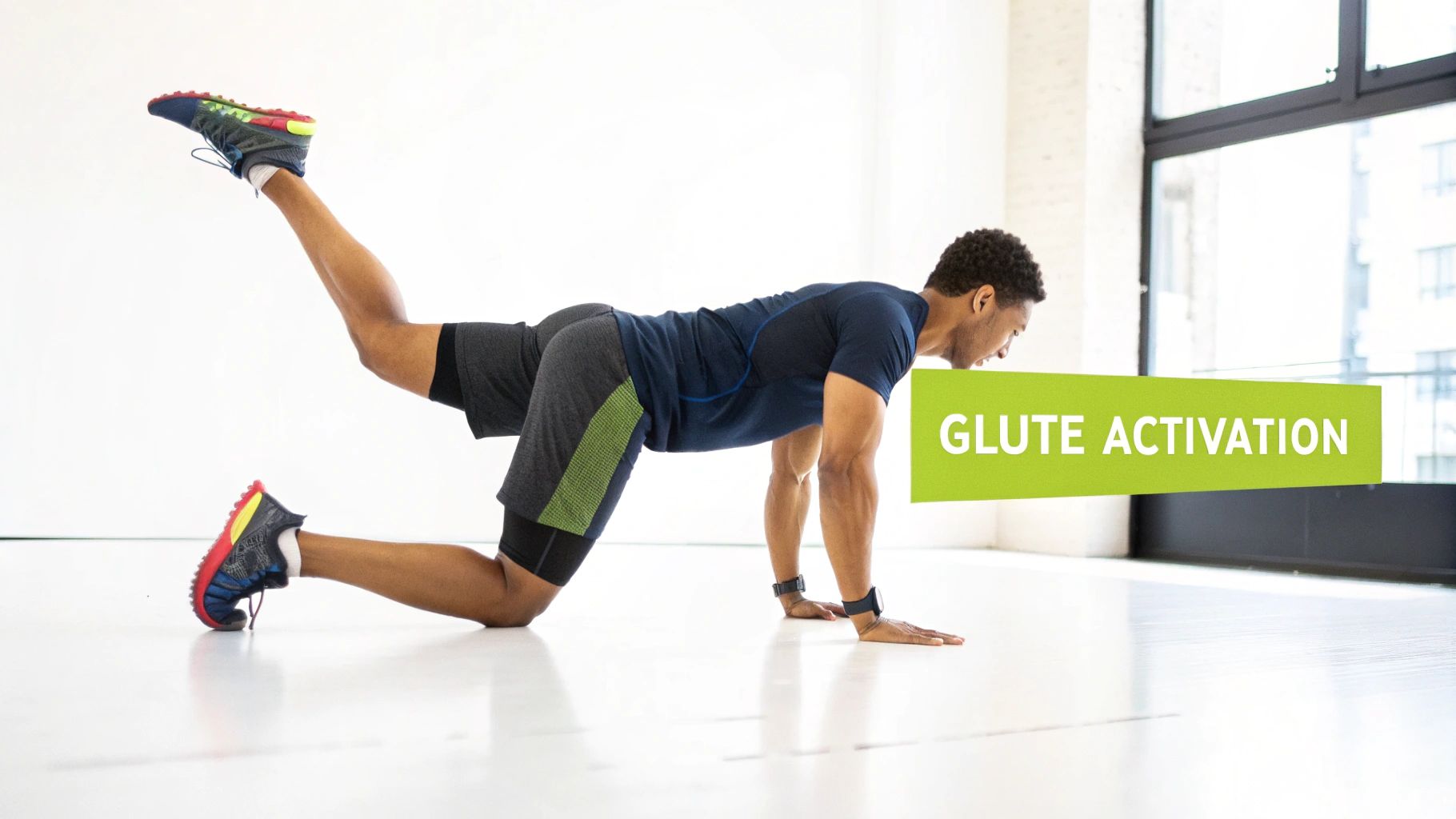
These targeted drills establish a strong mind-muscle connection, teaching your body to rely on the powerful gluteus maximus, medius, and minimus instead of smaller, less suitable muscles. By priming the correct muscles before you step on the court, you reduce the risk of compensatory injuries, improve your stability during lateral movements, and unlock greater power in your shots.
Key Padel-Specific Activation Drills
Focus on exercises that target hip stability and control, which are essential for the multi-directional demands of padel.
- Glute Bridges: This fundamental exercise activates the gluteus maximus, which is crucial for forward sprints and powerful hip extension.
- Clamshells: An excellent drill for targeting the gluteus medius, a key muscle for stabilizing your hips during side-to-side movements and preventing your knees from caving inward.
- Lateral Band Walks: These directly prepare your hips for the quick shuffles and defensive stances required to cover the court effectively.
How to Implement Your Activation Routine
Activation should be a non-negotiable part of your warm-up, performed after dynamic stretching but before any intense activity.
- Perform 2-3 sets of 10-15 reps for each exercise before practices or matches.
- Focus on the squeeze. The goal isn't fatigue but feeling the specific glute muscle contract with each repetition.
- Use light resistance or just your bodyweight. A light resistance band is often all you need to feel the muscles working.
By incorporating these simple yet effective activation drills, you ensure your body’s largest muscle group is ready to work, turning a common weak link into a source of strength and resilience. This simple addition makes your injury prevention exercises program significantly more robust.
8. Flexibility and Mobility Training
While dynamic stretching primes your body for action, flexibility and mobility training is crucial for post-game recovery and long-term joint health. This discipline involves static stretching, soft tissue work, and active mobility drills designed to improve muscle extensibility and joint range of motion. Unlike a pre-game warm-up, these are best performed after a match or on rest days to restore muscles to their resting length and alleviate tension.
Improved flexibility and mobility directly translate to more efficient movement on the court and a lower risk of injury. When your joints and muscles can move freely through their intended range, you reduce compensatory movements that often lead to strains, imbalances, and overuse injuries. This makes it a non-negotiable component of any serious player's injury prevention exercises routine.
Key Flexibility and Mobility Drills
Focus on areas that take a beating during padel, such as the hips, shoulders, and lower back.
- 90/90 Hip Stretch: This is an excellent drill for opening up the hips, improving both internal and external rotation which is vital for agile court coverage.
- Static Hamstring and Quad Stretches: Held post-match, these classic stretches help release tightness in the major leg muscles used for sprinting and lunging.
- Thoracic Spine Rotations: Using a foam roller or simply on all fours, these movements maintain upper back mobility, essential for powerful and pain-free smashes.
How to Implement Your Flexibility and Mobility Routine
Dedicate time after playing or on off-days to focus on recovery and restoration.
- Perform static stretches post-workout, holding each for 30-60 seconds without bouncing.
- Breathe deeply during stretches to help your nervous system relax and allow muscles to lengthen.
- Incorporate mobility drills 3-4 times a week to actively work on joint health, not just muscle length.
By combining static stretching with active mobility work, you create a comprehensive approach that enhances recovery and builds a more resilient body, safeguarding you against common padel injuries.
9. Rotational Core and Anti-Rotation Exercises
Padel is defined by powerful rotational movements like the bandeja and smash. While strengthening your core to produce this power is crucial, training it to resist unwanted rotation is equally important. Anti-rotation exercises teach your core to stabilize the spine during these explosive, asymmetrical actions, forming a critical component of your injury prevention exercises.
This type of training focuses on maintaining a neutral, stable spine while external forces try to twist it. By building this deep core stability, you create a solid foundation that protects your lower back from the immense rotational stress generated during a match. This prevents the micro-traumas that can lead to chronic back pain and more severe injuries.
Key Rotational and Anti-Rotation Exercises
To build a resilient core, integrate exercises that challenge your stability from different angles.
- Pallof Press: This is the quintessential anti-rotation exercise. Using a cable or resistance band, you press the handle straight out from your chest and resist the band's pull, forcing your core to fire to prevent torso rotation.
- Landmine Rotations: This exercise trains controlled rotation, teaching your core to manage torque safely through a full range of motion, which translates directly to powerful and safe shots.
- Wood Chops (High-to-Low & Low-to-High): These mimic the diagonal patterns of a padel swing, strengthening the obliques and enhancing your ability to transfer force from the ground up through your core.
How to Implement Your Core Training
Incorporate these movements into your strength training routine 1-2 times per week for maximum benefit.
- Focus on resisting movement, not creating it. The goal is to keep your hips and shoulders square and your spine neutral.
- Perform 3 sets of 8-12 reps per side. Quality is far more important than quantity; each repetition should be slow and deliberate.
- Progress by gradually increasing the resistance, not by sacrificing form for speed or weight.
By making anti-rotation work a staple in your routine, you are reinforcing your body's central pillar, a fundamental step in building a robust set of injury prevention exercises for a long and healthy padel career.
10. Single-Leg and Unilateral Exercises
Much of padel involves moving off one leg: lunging for a drop shot, pushing off for a smash, or changing direction. Single-leg, or unilateral, exercises are a critical component of injury prevention exercises because they address the strength imbalances that bilateral (two-legged) movements often mask. By training one limb at a time, you force smaller stabilizing muscles to activate, improving balance, proprioception, and core stability.
This type of training directly mimics the functional demands of padel, where you are rarely perfectly balanced on two feet. Correcting a strength deficit in your non-dominant leg, for instance, can prevent the dominant side from overcompensating and becoming susceptible to overuse injuries. This targeted approach builds a more resilient and symmetrically strong foundation, ready for the unpredictable movements of a match.
Key Padel-Specific Unilateral Exercises
Focus on exercises that challenge stability and replicate on-court movements.
- Bulgarian Split Squats: This exercise is exceptional for building single-leg strength in the quads and glutes while also improving hip flexibility.
- Single-Leg Romanian Deadlifts (RDLs): Perfect for strengthening the hamstrings and glutes on one side, this movement enhances balance and stability through the posterior chain.
- Single-Arm Dumbbell Rows: This challenges core stability by forcing your torso to resist rotation, a crucial skill for powerful and controlled shots.
How to Implement Unilateral Training
Integrate these exercises into your existing strength routine 1-2 times per week.
- Start with your weaker side to ensure it gets the most focus and energy.
- Prioritize form over weight. The balance challenge is the primary benefit, so maintain control throughout the entire movement.
- Begin with bodyweight or light resistance and progress only when you can complete all reps with excellent stability.
By incorporating unilateral work, you are directly addressing the imbalances that lead to injuries. This makes it an essential part of any comprehensive program of injury prevention exercises for the serious padel player.
Injury Prevention Exercises: 10-Point Comparison
| Method | 🔄 Implementation complexity | ⚡ Resources & time | 📊 Expected outcomes | ⭐ Key advantages | 💡 Ideal use cases |
|---|---|---|---|---|---|
| Dynamic Stretching | Low–Medium: technique important for safety | Minimal equipment; 5–10 min pre-workout | Increased ROM, blood flow, neuromuscular activation | Improves immediate athletic performance and reduces injury risk | Warm-up before high-intensity or sport-specific sessions; start controlled, progress speed |
| Core Stabilization Exercises | Medium: requires consistent quality of movement | Little equipment; regular practice (3–4x/wk) | Improved spinal alignment, posture, reduced back pain | Builds durable trunk support and reduces load on joints | Rehab and prevention for low-back issues; emphasize slow, controlled reps |
| Proprioceptive Training (Balance) | Medium–High: careful progression to avoid falls | Minimal equipment (balance pads/boards); 2–3x/wk | Enhanced balance, coordination; fewer ankle/knee injuries and falls | Strong gains in sensory feedback and reactive control | Post-injury rehab, older adults, athletes needing agility; progress near support initially |
| Foam Rolling / Self-Myofascial Release | Low: simple but requires correct technique | Foam roller; portable; 5–10 min sessions | Reduced muscle tension and soreness; temporary mobility improvements | Inexpensive, quick recovery tool to complement training | Pre/post workout or recovery days; roll 30–60s per muscle, avoid bones/joints |
| Neuromuscular Training Programs | High: structured, multifaceted and technical | Moderate equipment; time-intensive; 2–3x/wk for weeks | Significant reductions in ACL/ankle injuries; improved coordination and performance | Comprehensive neural and movement pattern adaptations with lasting effects | Team sport preseason, ACL prevention programs; integrate into regular training |
| Eccentric Strengthening Exercises | Medium–High: precise tempo and progression required | Weights or bodyweight; 2–3x/wk; expect soreness | Strong tendon and connective-tissue adaptation; reduced tendinopathy risk | Produces large strength/tendon adaptations per rep | Tendinopathy rehab and targeted injury prevention; use slow 3–5s lowering phase |
| Glute & Hip Activation Exercises | Low: simple movements but form-critical | Little/no equipment; 5–10 min pre-activity | Improved hip stability, reduced compensatory patterns | Quick, effective for correcting neuromuscular imbalances | Before lower-body training or running; focus on feeling glute contraction |
| Flexibility & Mobility Training | Low–Medium: timing and technique affect results | Minimal equipment; 5–15 min post-workout or dedicated sessions | Increased joint ROM, reduced tension, better movement quality | Improves long-term mobility and recovery when consistent | Cool-downs and mobility sessions; hold static stretches 30–60s post-exercise |
| Rotational Core & Anti-Rotation | Medium: needs alignment awareness and progression | Minimal equipment (bands/landmine); 1–2x/wk inclusion | Improved resistance to unwanted rotation; spine protection | Enhances sport-specific rotational control and endurance | Throwing, swinging, or twisting sports; emphasize neutral spine and resistance |
| Single-Leg & Unilateral Exercises | Medium–High: demands balance and foundational strength | Little equipment; slower progression but time-efficient | Corrected strength imbalances, enhanced proprioception and stability | Functional, sport-specific carryover; reduces compensatory injuries | Rehabilitation and functional training; perform equal volume per side |
Integrating Prevention into Your Padel Routine
You now have a comprehensive toolkit of ten distinct categories of injury prevention exercises, each designed to fortify your body against the specific, high-impact demands of padel. We’ve moved beyond generic advice and explored the critical roles of dynamic stretching, core stabilization, proprioceptive training, and neuromuscular control. From the explosive power generated by glute activation to the controlled deceleration offered by eccentric strengthening, each exercise category serves a unique purpose in building a resilient athletic foundation.
The key takeaway is that prevention is not a passive activity but an active, integrated part of your training. It’s the deliberate practice of foam rolling to release muscle tension, the consistent focus on single-leg exercises to correct imbalances, and the commitment to rotational core work that protects your spine during powerful smashes. These are not merely add-ons; they are fundamental components of intelligent, long-term athletic development.
Your Actionable Path Forward
To avoid feeling overwhelmed, implement these strategies systematically. Think of it as building a house: you start with the foundation and add layers over time. Here’s a practical plan to get started:
- Week 1-2: The Foundation. Begin by incorporating dynamic stretching before every single session on the court. Additionally, choose two days a week for core stabilization exercises and glute and hip activation. This initial phase primes your body for movement and awakens the key power-producing muscles.
- Week 3-4: Building Stability. Continue with your foundational work. Now, layer in proprioceptive (balance) training and single-leg exercises. You can add these to your warm-up or as part of a separate, short workout. The goal here is to enhance your balance and correct any muscular asymmetries that could lead to injury.
- Week 5-6: Introducing Strength and Recovery. It's time to add eccentric strengthening exercises and rotational core work. At the same time, introduce foam rolling after your most intense sessions. This combination builds functional strength while actively managing muscle soreness and improving recovery.
- Ongoing Integration: As you become more comfortable, your weekly routine should feature a mix of these elements. A well-rounded program doesn't require doing everything every day, but rather touching on each category consistently throughout the week.
The True Value of Prevention
Mastering these injury prevention exercises is about more than just avoiding a pulled muscle or a sprained ankle. It is an investment in your performance and longevity in the sport you love. A stronger, more stable body allows you to move with greater confidence, generate more power in your shots, and recover faster between matches. You are not just sidestepping setbacks; you are actively building a more capable, powerful, and durable version of yourself as a padel player. The time you dedicate to prevention pays dividends every time you step on the court, ensuring you can play harder, compete longer, and enjoy the game for years to come.
Ready to take your game to the next level with the right gear and insights? At Padel Rumors, we don't just talk about performance; we provide in-depth reviews and guides to ensure your equipment supports your injury prevention goals. Discover the best shoes for stability, rackets that reduce arm strain, and much more at Padel Rumors.


